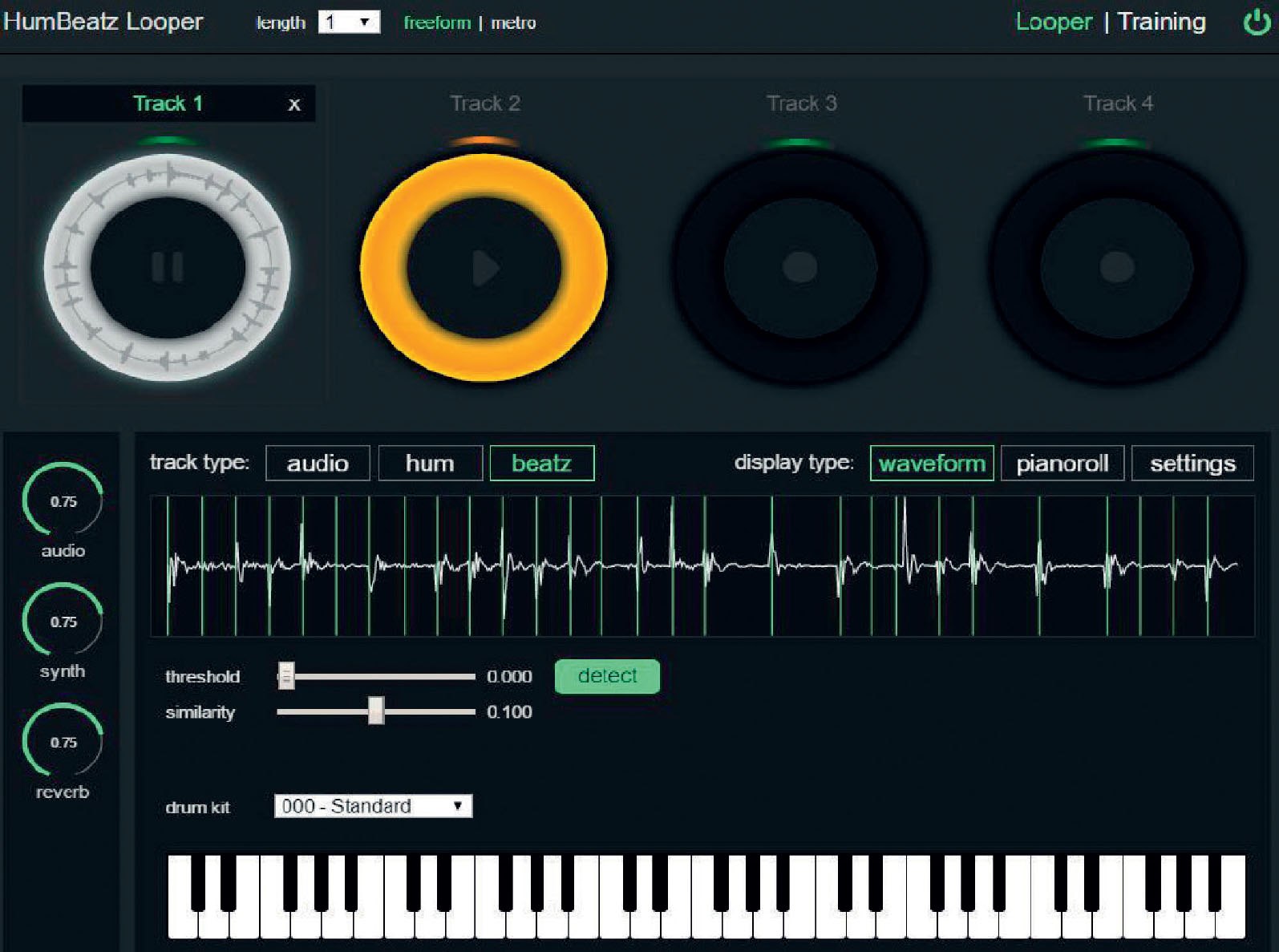
Swedish company AmpTrack Technologies is best known for producing Amped Studio, a DAW that works both in the cloud and on desktops. However, its latest project is HumBeatz, a pitch and beat detection software that runs in Google Chrome. It is currently available free, in a beta version through its website.
The HumBeatz Loop Station is designed primarily for those who make music with their voice – whether through beatboxing, humming, singing, or other vocalisations. It offers the ability to loop and sync up to four tracks, as well as turning your musical offerings into MIDI data for further manipulation.
Clean interface
The interface is dark, but fairly clean. The ‘Help’ page is overly complex, but there is a four-minute tutorial on YouTube that clearly explains the basics. Essentially, you set your tempo, click record on the first track, wait for the little circle to go round the bigger circle (this is your count-in), then you make some noise. The software uses your system's inputs and outputs, so built-in speakers and mic work well, as do more complex audio interfaces – just remember to use headphones to monitor when recording, to avoid feedback.
By default, HumBeatz will record one bar, and then loop it as pure audio. You can change this to two or four bars, and once you have recorded a track, you can change its type: either ‘beatz’, or ‘hum’. ‘Beatz’ presents you with a customisable drum pad, and will assign your vocal sounds to a drum sound. For example, if you record a beat using bass and snare sounds, the software will recognise them and allow you to tinker with them. Essentially, you can create a drum beat on real instruments by recording the beat you want with your mouth – perfect for students who aren't comfortable notating their ideas. There are a huge number of different sounds, and it was pretty accurate in my testing (I asked a willing sixth-former to provide the beats, but it also dealt with my beginner attempts admirably).
‘Hum’ mode is even more powerful. It will turn your hums, whistles or scats into MIDI data. You can adjust the sensitivity with a simple slider, and it presents the data on a piano roll. With these two tools, you can correct any discrepancies between your original idea and the output. If desired, you can then select a MIDI instrument and hear your ideas played on a trumpet, organ, or whatever instrument you choose. My own tuneful warbles translated well, whether whistles, hums or oohs. There is enormous potential here for students to input ideas, experiment, and tinker with melodies and harmonies without using traditional notation.
Once you have hummed or beatboxed your four tracks, you can add effects. Currently this is limited to reverb and delay, but with a major upgrade due imminently, new features are likely to be added. Users should then be able to export as audio or MIDI data, and you can save projects with a free Amped Studio account.
 HumBeatz can loop four tracks simultaneously
HumBeatz can loop four tracks simultaneously
Visual clues
There are a few niggles that I found, mainly with the interface; for example, I couldn't work out how to toggle the metronome, so was relying on visual clues to record in time. (I got there in the end, but it wasn't obvious.) Without watching the tutorial, I would not have got beyond recording one-bar snippets, so a typical teenager might give up before discovering the full potential of this app. You can easily create really engaging loops for performance with HumBeatz, although as a tool for aiding composition it may have its limitations; the four-bar limit means that importing and exporting extended melodies to and from the app and a DAW will be time-consuming. Many decent DAWs will offer the pitch-matching functionality natively, or through the use of a plugin.
However, this beta is an interesting experiment, and using it encouraged me to spend a little time researching Amped Studio, the paid product from AmpTrack Technologies. Those who dabble in looping and beatboxing will have fun with this, but those who take it more seriously will probably gravitate towards a more powerful product like Ableton. It would make for an engaging KS3 project as part of a wider scheme of work on music technology. It might also help a KS4 student struggling to notate composition ideas, but for this use it is more of a composer's notepad than a fully fledged compositional aid. Since it is free, though, there is no harm at all in pulling up the website and testing out your singing and beatboxing skills.








